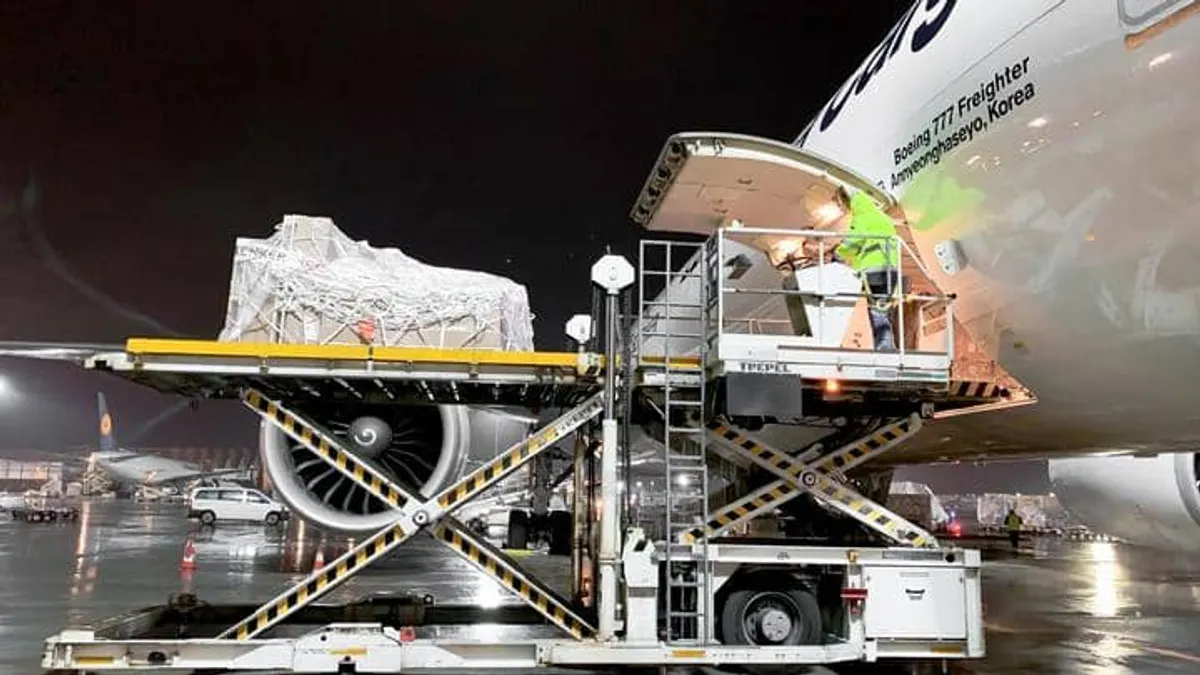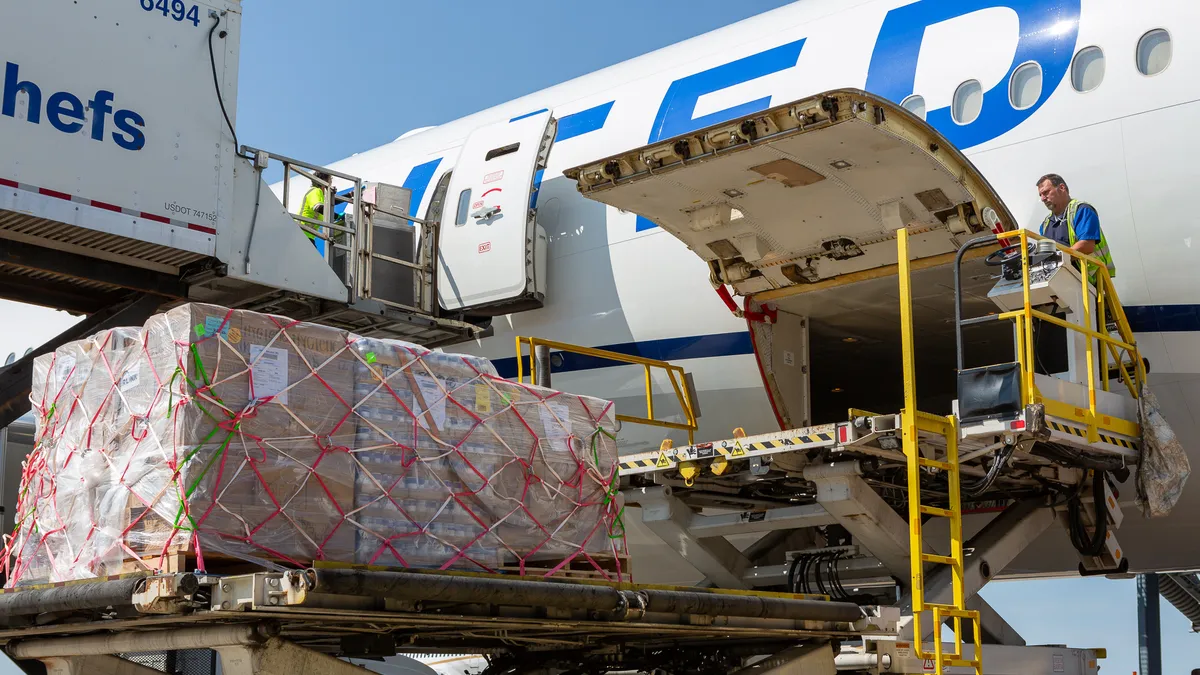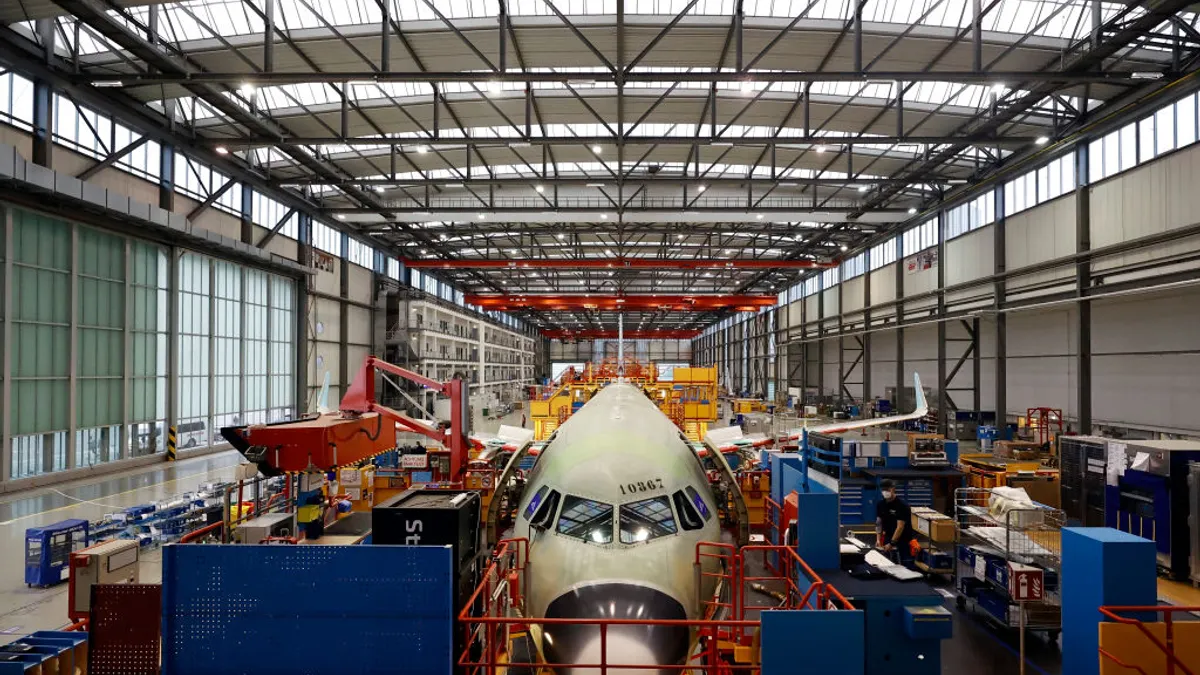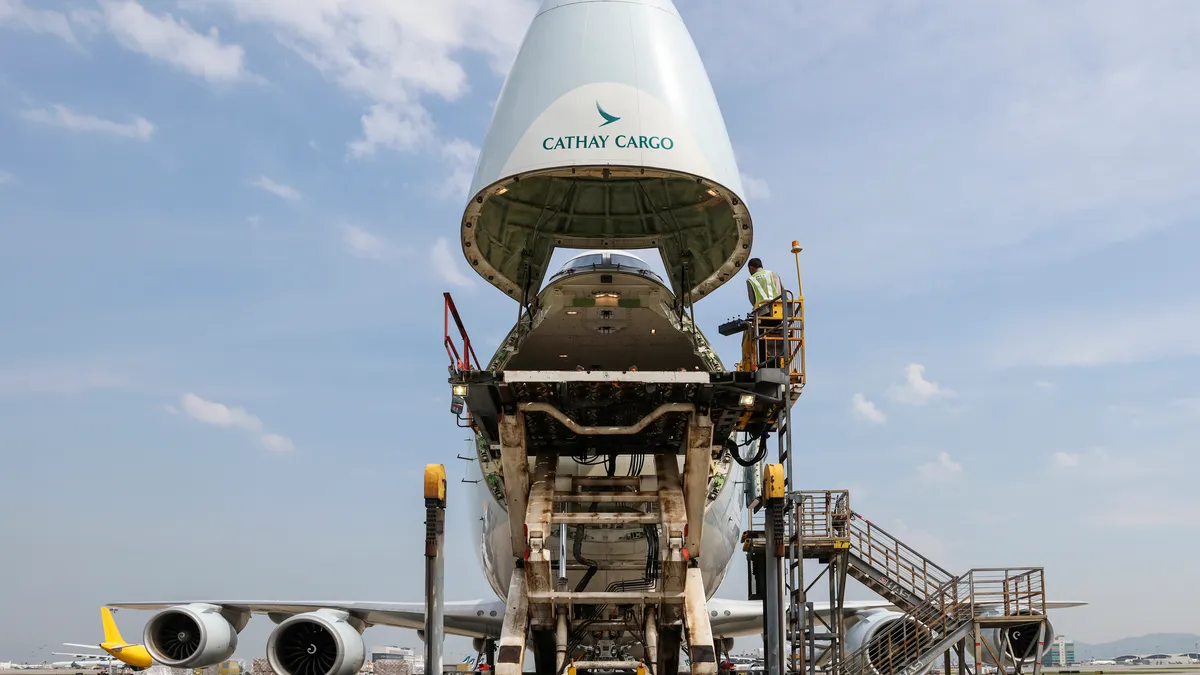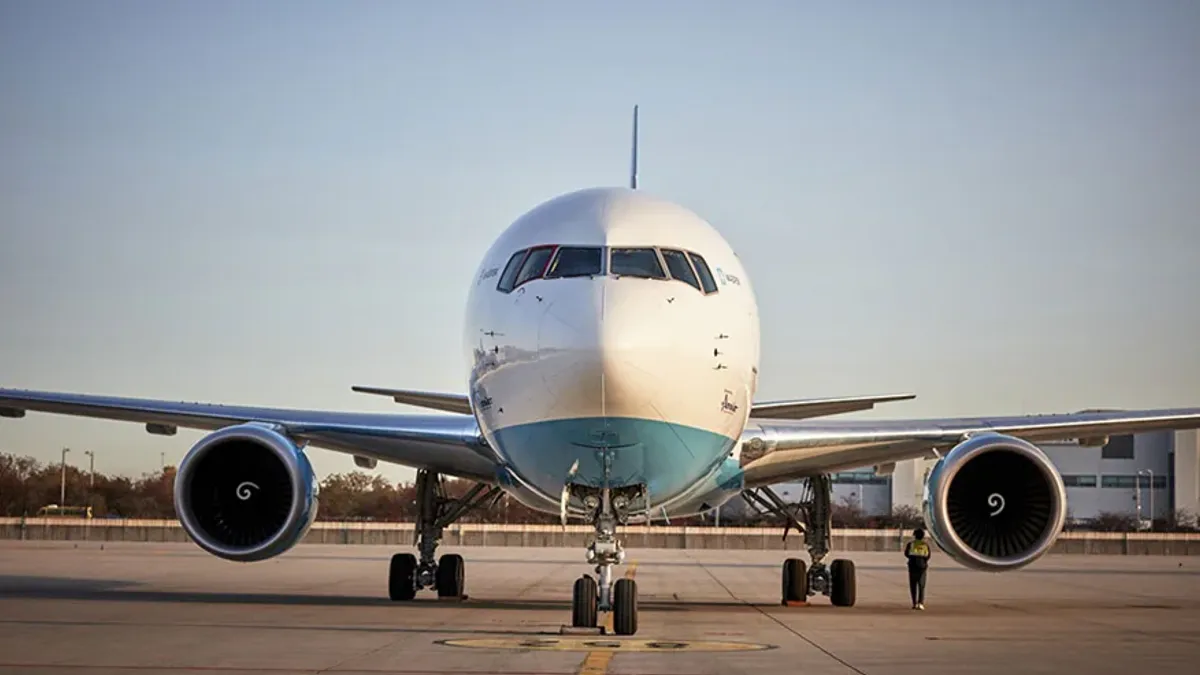The electronic logging device (ELD) mandate is changing the shape of transportation logistics.
Trucking, of course, has been the mode most affected by the regulation, but the effects have spiraled into ocean shipping, intermodal and air freight, causing delays, bottlenecks and rate increases as shippers look for ways to meet customer needs.
The mandate, which took effect just over a year ago, is among the factors leading shippers to seek alternative modes of moving their goods, Michael Notarangeli, EVP Logistics at Maine Pointe, told Supply Chain Dive. "In the short run, intermodal has seen a bump in utilization as shippers hustle to get things moved."
Part of that intermodal bump is a growth in air freight volumes. According to the International Air Transport Association (IATA), $17.5 billion of goods travel by air — 35% of all world trade by value. IATA also reported that North American airlines’ freight volumes expanded 3.2% in April 2018 — the month enforcement of the ELD mandate began — compared to the same period a year earlier.
"The front and back end of that intermodal move gets covered by a truck and is affected by ELD, driver shortages, improving economy — all the factors constraining capacity for shippers," Notarangeli said.
Long distance makes a difference
The already existing capacity crunch has been worsened by the ELD, Frank Guenzerodt, President & CEO of Dachser USA Air & Sea Logistics, told Supply Chain Dive via email. He added the mandate really comes into play when air cargo must be delivered to a region distant from the airport.
"Most air freight is flown to an airport in the region it is being delivered to, or picked up in, so the ELD does not usually come into play. If it is not being delivered regionally, then the ELD does come into effect and the need for team service arises. Paying for a team as compared to a solo inflates the rate from years past."
"The rates we have now will be the new norm moving forward."

Frank Guenzerodt
President & CEO, Dachser USA Air & Sea Logistics
This, he added, combined with the driver shortage, has caused rates to rise. "They have slowed down, but I do not think they will drop to pre-ELD levels," Guenzerodt said. "The rates we have now will be the new norm moving forward. Many carriers have had to renegotiate agreed upon rates to mitigate their losses."
When the ELD does come into play, it makes a difference. The hours-of-service segment of the mandate has increased transit times for shipments, especially on lanes exceeding 450 miles, Bradley Watanabe, Regional Head of Airfreight Americas at APL Logistics, told Supply Chain Dive via email. "All facets of trucking have seen impact, including short-haul drayage moves for air cargo."
Big volume, big cost
Hartsfield-Jackson Atlanta International Airport is the 12th busiest airport in terms of cargo volume with 648,595 metric tons of freight and mail passing through its facilities in 2016, according to the Federal Aviation Administration. The airport has suffered congestion issues, often caused by trucks lining up and waiting to pick up or drop off loads.
TOC Logistics has numerous clients in the auto parts arena. Their clients have experienced long waits for air cargo to be transported. Delayed delivery, whether caused by logjams at the airport or by the driver shortage, can lead to long shutdowns of lines at the manufacturer, Jennifer Hunter, Air Export Supervisor at TOC Logistics, told Supply Chain Dive.
"To find a truck, you’re paying almost double to get shipments delivered," she said. "Rates are higher when there’s a shortage. If they don’t get the product on time and the line shuts down, it can cost thousands of dollars per minute."
"Intermodal has seen a bump in utilization as shippers hustle to get things moved."

Michael Notarangeli
EVP Logistics, Maine Pointe
Often, TOC will use hand-carry services on domestic flights for small cartons, which are carried on as baggage and hand-delivered to the client. However, if the client is facing a "line down" situation, an air charter will be used. Charters are very expensive, Hunter said, but "it’s still cheaper in the long run than your line going down."
How expensive is shipping by air? A 2,000-pound box from Shenzhen, China, to New York City costs about $1,200 by ocean but $4,000 by air, according to Freightos, an online marketplace for international freight. For heavier deliveries, such as shipping containers, ocean is much more economical, since air freight is priced on size and weight, which can raise prices drastically.
Look upstream for cost savings
Dachser’s Guenzerodt said once items reach the airport, there aren't any alternatives other than looking upstream.
"The alternatives are managing the supply chain from the beginning to reduce cost. Shipping freight a day or days earlier when available gives us the time to still deliver on a specified due date without having to pay for hotshots [urgent-delivery freight companies] or teams."
Maine Pointe’s Notarangeli added that collaborative relationships with carriers are a must. "These relationships include constant discussions about forecast over a longer horizon… It sounds counterintuitive, but an unintended consequence of ELD may be new entrants into the market, with enhanced services, higher levels of efficiency and new alliances," he said. "Shippers who engage in active management with their partners will do better than most."







